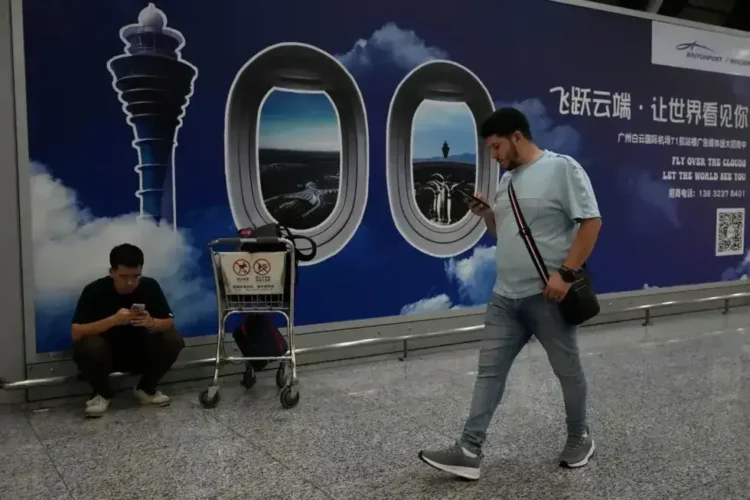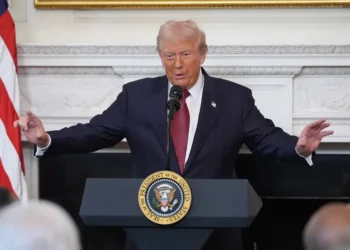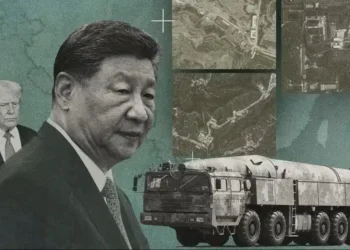China has launched a new visa program aimed at luring international science and technology professionals, intensifying competition with the United States for global talent. The initiative, known as the K-visa, is part of Beijing’s broader push to position itself as a leading global hub for innovation and advanced research.
The visa, introduced last month, allows skilled workers in technology-related fields to apply without a prior job offer — a significant relaxation compared to existing schemes. The program arrives as Washington faces criticism over its increasingly restrictive immigration policies, particularly the H-1B visa, which many foreign workers rely on to enter the U.S. technology sector.
For professionals like Vaishnavi Srinivasagopalan, an Indian IT expert with experience in both India and the U.S., China’s move presents a new opportunity. “The K-visa for China is equivalent to the H-1B for the U.S.,” she said, noting her growing interest in China’s work culture and innovation ecosystem.
China’s Bid to Close the Global Talent Gap
The K-visa complements China’s existing R-visa for foreign professionals but aims to simplify access by removing employment prerequisites. The initiative reflects Beijing’s recognition of the ongoing global competition for top-tier talent in artificial intelligence, robotics, and semiconductor development — areas it has heavily subsidized under President Xi Jinping’s industrial modernization agenda.
“Beijing perceives the tightening of immigration policies in the U.S. as an opportunity to position itself globally as welcoming foreign talent and investment more broadly,” said Barbara Kelemen, associate director and head of Asia at Dragonfly, a security intelligence consultancy.
In recent years, U.S. visa policies have become less favorable to foreign workers, particularly under former President Donald Trump’s administration, which raised application fees for H-1B visas and imposed stricter vetting procedures. The uncertainty surrounding these policies has pushed many professionals and international students to consider alternative destinations.
Changing Global Migration Dynamics
“Students studying in the U.S. hoped for an H-1B visa, but currently this is an issue,” said Bikash Kali Das, an Indian graduate student at Sichuan University in Chengdu, China.
China’s move comes as the country seeks to reverse a decades-long brain drain, in which many Chinese students who studied abroad chose to stay in the U.S. or Europe. Despite progress, the flow of high-level talent out of China remains significant. “Many Chinese parents still see Western education as advanced and want their children to study abroad,” said Alfred Wu, an associate professor at the National University of Singapore.
Still, China’s strategy appears to be gaining traction. A growing number of professionals, including Chinese-Americans and foreign engineers, have relocated to China to teach or work in research. Notable examples include Fei Su, a chip architect formerly with Intel, and Ming Zhou, a senior engineer from U.S.-based software company Altair, both of whom accepted academic positions in China this year.
“Many skilled workers in India and Southeast Asia have already expressed interest in the K-visa,” said Edward Hu, an immigration consultant with Newland Chase in Shanghai.
Concerns Over Domestic Job Competition
However, the new policy has also sparked debate within China. With youth unemployment among 16–24-year-olds — excluding students — hovering around 18%, some young job seekers worry that the influx of foreign professionals could intensify job competition.
“The current job market is already under fierce competition,” said Zhou Xinying, a 24-year-old postgraduate student in behavioral science at Zhejiang University. While she acknowledged that international experts could “bring new technologies and perspectives,” she also noted that many young Chinese “may feel pressure due to the introduction of the K-visa policy.”
Kyle Huang, a software engineer based in Guangzhou, echoed similar concerns, saying some peers in science and technology fear the policy “might threaten local job opportunities.”
State-backed media, however, has dismissed these fears. The Shanghai Observer recently argued that foreign professionals would help fill existing skills gaps rather than displace local workers, emphasizing that China’s growth in advanced sectors such as AI and semiconductors requires specialized expertise still in short supply domestically. “The more complex the global environment, the more China will open its arms,” the commentary said.
Balancing Opportunity with Structural Challenges
Analysts note that China still faces several hurdles in making itself more attractive to foreign talent. The language barrier, strict internet controls under the country’s “Great Firewall,” and limited pathways to permanent residency remain significant deterrents.
Despite being home to about 1.4 billion people, China hosted only around 711,000 foreign workers as of 2023, according to government estimates. In contrast, the U.S. continues to lead globally in research infrastructure, innovation capacity, and English-language accessibility — all key factors for attracting global talent.
“The U.S. may be sabotaging itself, but it’s doing so from a far more competitive position in terms of its attractiveness to talent,” said Michael Feller, chief strategist at Geopolitical Strategy. “China will need to do far more than offer convenient visa pathways to attract the best.”
India-China Relations and Broader Implications
Some professionals remain hesitant to relocate due to geopolitical tensions. Nikhil Swaminathan, an Indian H-1B visa holder working in the U.S., said that while he sees potential in China’s technology sector, strained relations between New Delhi and Beijing remain a deterrent. “I would’ve considered it. China’s a great place to work in tech, if not for the difficult relationship between India and China,” he said.
Experts believe that while the U.S. risks losing some potential H-1B applicants, most are more likely to seek opportunities in the U.K., Canada, or the European Union rather than in China.
Still, the launch of the K-visa marks a symbolic shift in China’s approach to global labor mobility — signaling its intent to compete more directly with Western nations in recruiting scientific and technological talent. Whether the policy succeeds may depend on how effectively Beijing balances its domestic employment challenges with its ambitions for technological self-sufficiency.
This article was rewritten by JournosNews.com based on verified reporting from trusted sources. The content has been independently reviewed, fact-checked, and edited for accuracy, tone, and global readability in accordance with Google News standards.
Stay informed with JournosNews.com — your trusted source for verified global reporting and in-depth analysis. Follow us on Google News, BlueSky, and X for real-time updates.
JournosNews.com follows Google News content standards with original reporting, verified sources, and global accessibility. Articles are fact-checked and edited for accuracy and neutrality.














